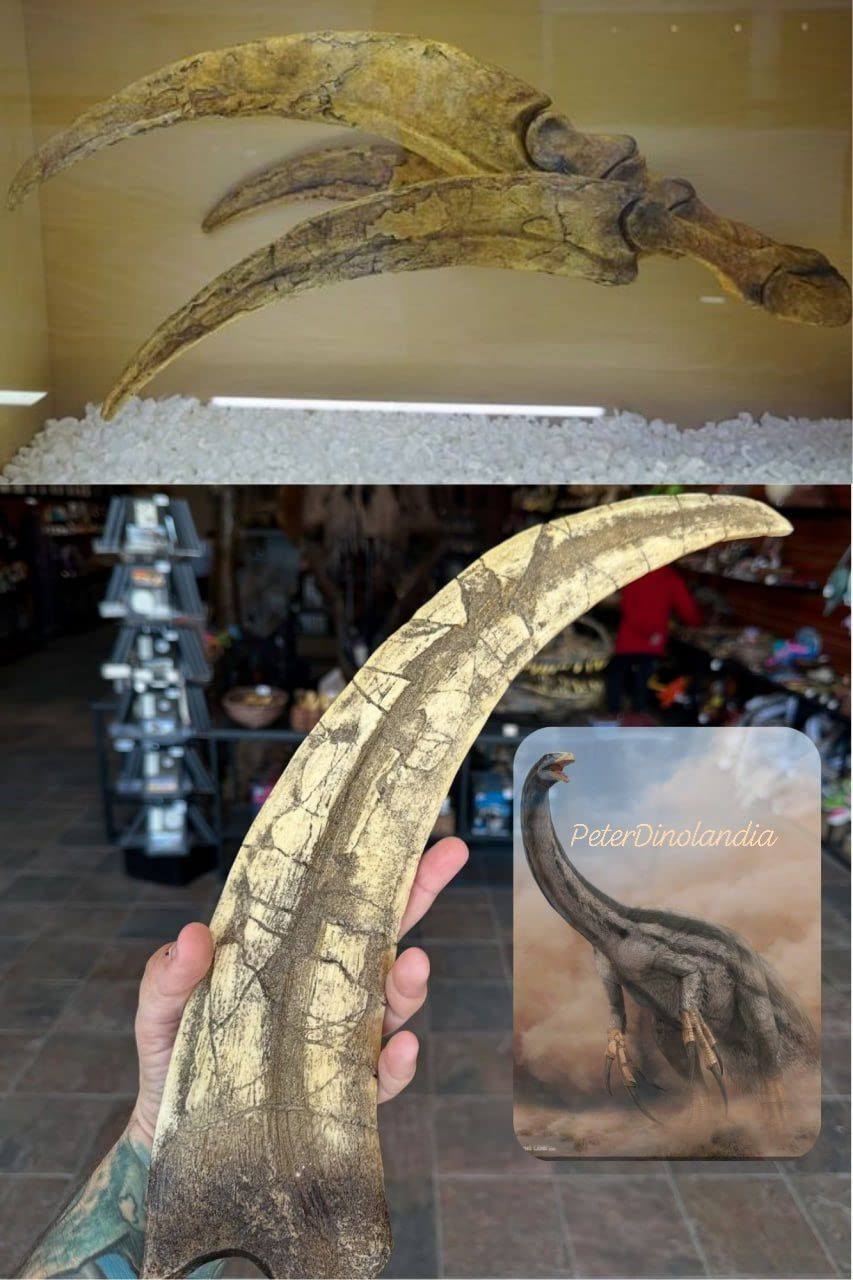Therizinosaurus: The Scythe-Lizard of the Gobi Desert

The world of dinosaurs is filled with creatures that defy imagination, but few are as strange—or as misunderstood—as Therizinosaurus. First discovered in 1948 in the windswept expanses of Mongolia’s Gobi Desert, this prehistoric giant baffled scientists for decades. With claws stretching more than three feet in length—the longest of any animal ever known—it was unlike anything paleontologists had ever encountered. Today, Therizinosaurus is recognized not as a predator, but as one of evolution’s most peculiar plant-eating theropods, a reminder that prehistoric life often defied expectations.
A Discovery That Sparked Confusion
The initial fossils of Therizinosaurus consisted mainly of enormous, sickle-shaped claws. Their size and shape were so bizarre that researchers originally believed they belonged to a massive giant turtle. Only later, with the discovery of additional bones and feather impressions, did paleontologists realize that the claws were part of a feathered dinosaur, one that stood on two legs and towered up to 33 feet (10 meters) in length.

This revelation redefined Therizinosaurus as a member of the theropod group—the same broad lineage that produced fearsome carnivores like Tyrannosaurus rex and Velociraptor. Yet Therizinosaurus was strikingly different.
The Claws: Nature’s Scythes
The most distinctive feature of Therizinosaurus remains its three-foot-long claws. Curved like scythes, these terrifying appendages gave rise to its name, which literally means “scythe lizard.” While they look like weapons designed for slashing prey, evidence suggests they were not primarily used for hunting. Instead, scientists believe the claws helped Therizinosaurus:
-
Strip leaves and branches from tall plants.
-
Defend itself against predators with powerful swipes.
-
Display or intimidate rivals, much like antlers or horns in modern animals.
This combination of ferocity in appearance and gentleness in diet makes Therizinosaurus one of the most fascinating paradoxes in the dinosaur world.
A Feathered Giant
Unlike the reptilian monsters often imagined in early paleontology, Therizinosaurus was likely covered in feathers, further blurring the line between dinosaurs and modern birds. Its long neck and pot-bellied frame gave it a unique silhouette, while its vegetarian lifestyle stood out among theropods typically associated with predation.
These traits highlight the incredible diversity of dinosaur evolution. Therizinosaurus proves that not all large theropods were carnivores, and that adaptation often produced surprising results.

The Stranger-Than-Fiction Dinosaur
Standing in contrast to icons like T. rex or Triceratops, Therizinosaurus represents the unpredictability of prehistoric ecosystems. It lived around 70 million years ago, sharing its environment with both predators and plant-eaters in a complex Cretaceous ecosystem. Its claws alone have secured it a place in paleontological legend, making it one of the most instantly recognizable dinosaurs despite its relatively recent identification.
Conclusion
Therizinosaurus, the “scythe lizard” of the Gobi Desert, remains one of the most enigmatic dinosaurs ever discovered. With the longest claws in the animal kingdom, a feathered body, and a likely herbivorous diet, it defied expectations of what a theropod could be. Both terrifying in appearance and gentle in behavior, Therizinosaurus stands as a testament to the boundless creativity of evolution—and a reminder that the prehistoric world was often stranger than we can imagine.









